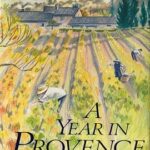The sentiment “A gude New-year to ane and a'” encapsulates the spirit of Scottish New Year, or Hogmanay. This exploration delves into a ballad published by the Poet’s Box in Glasgow on December 30th, 1865, reflecting on the traditions, emotions, and historical context surrounding this iconic celebration.
The ballad, priced at one penny, begins with the verse: ‘A gude New-year to ane and a’, / And mony may ye see, / And during a’ the years to come, / Oh happy may ye be. / and may ye ne’er ha’e cause to mourn, / To sigh or shed a tear – / To ane and a’, baith great and sma’, a hearty guid New-year.’ These lines echo the common hopes and wishes associated with the New Year, both in Scotland and beyond.
Hogmanay Traditions and Sentiments
The themes present in the ballad are characteristic of Hogmanay celebrations: nostalgia, reflection on the past year, and optimistic anticipation for the future. These sentiments resonate even today at Scottish New Year gatherings. Just as in Robert Burns’s “Auld Lang Syne,” adapted from earlier folk songs, there’s a sense of shared experience, remembrance, and a looking forward. The references to “braes and trees” in the ballad’s third verse suggest a direct influence from Burns’s version of “Auld Lang Syne,” which has become a staple of Hogmanay celebrations worldwide. This intertextuality highlights the enduring power of these themes and their connection to Scottish identity.
The Poet’s Box and Broadsheet Ballads
The Poet’s Box, a Glasgow-based publisher operating from 1849 to 1911, played a significant role in disseminating popular culture through broadsheet ballads. Matthew Leitch owned the Poet’s Box at 6 St. Andrew Lane’s from 1850 to 1858. His son William Munsie Leitch took over and worked at various addresses in London Street until 1911. These broadsides, often dated and sometimes featuring advertisements, offered a variety of content, including love songs, sea shanties, parodies, and dialogues. The Poet’s Box wasn’t unique to Glasgow; similar “boxes” existed in Dundee, Edinburgh, Belfast, and Paisley. These publishers likely exchanged material, contributing to the widespread circulation of ballads across Scotland and beyond. John Sanderson from Edinburgh, for example, corresponded with the Leitches in Glasgow for songs, and his brother Charles later obtained copies from the Dundee Poet’s Box.
The Evolution of the Ballad Form
Ballads, originally oral traditions, were dramatic or humorous narrative songs rooted in folk culture. The advent of printing allowed for their preservation and wider distribution through broadsides. While musical notation was rarely included, the tunes were usually well-known. The term “ballad” broadened over time to encompass any topical or popular verse. Broadsheet ballads provide valuable insights into the social, cultural, and emotional landscape of the time, offering a glimpse into the lives and concerns of ordinary people.
“A Guid New Year to Ane an A'”: A Lasting Legacy
The ballad “A gude New-year to ane and a'” is more than just a historical artifact; it’s a window into the heart of Hogmanay and the enduring values of Scottish culture. Its simple yet heartfelt message of hope, goodwill, and togetherness continues to resonate with people today, making it a relevant and meaningful expression of the New Year spirit. As we raise a glass to the coming year, the words “A gude New-year to ane an a'” serve as a timeless reminder of the importance of community, connection, and optimism in the face of the future.
